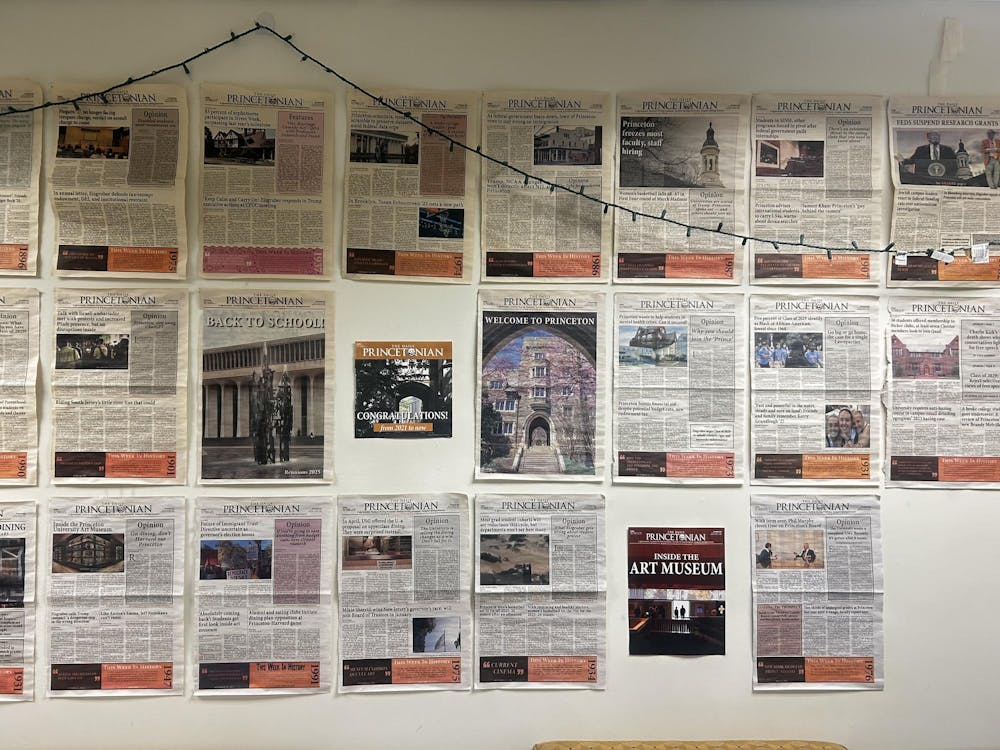It had already been a particularly grating night when I trudged my way to the Wa. I had already set off the fire alarm (twice) burning popcorn in Witherspoon, and the U-Store employees had shut the doors on me as I wildly gesticulated toward my phone, which read 3:59 a.m. Just when I thought my luck couldn’t get any worse, I realized I had looped around the Wa four times and was trapped in the metal maze that was the Arts and Transit project.
Despite its very prominent construction and a $300 million donation made in its honor, the Arts and Transit project has gotten very little reaction beyond annoyance. Very few seem to know the objective of the project, nor do they seem to care; all they know is that journeying to Forbes is now a daily Triwizard task. However, behind this indifference lies a significant turning point in how Princeton has come to perceive and interact with the arts on campus. With the exception of the Art Museum, the University has always been more of a sponsor for cultural events off-campus than an active patron for bringing the arts near home. The scramble for "Lion King" tickets may be more vicious than my grandmother haggling at night market, yet the objectives of the Arts and Transit project are hardly ever discussed. The University can’t bring the “arts” back to liberal arts without better engaging the students in the process.
Part of the issue is how we perceive the arts. Generally, the arts are what we’d all love to be a part of but don’t have the time for. They’re always referred to in the context of “arts and leisure” or “arts and recreation”; art is never seen as a fundamental reflection of our lives with broader implications. It’s a means of rewarding ourselves when we have the time, a stage of self-actualization that can only be achieved after we fulfill our most basic needs of finishing a problem set or even grabbing late meal.
This is a mindset that originates predominantly in and is reflected by how we study the arts at Princeton. While majors and certificates allow those specializing in the arts to more easily explore options and branch out into various academic fields, the majority of us find it difficult to dip our feet in. Introductory courses, while approachable, hardly offer more than a perfunctory glimpse into the arts and offer little incentive for beginner students to stay. For the few brave souls who do, they are confronted by a huge leap in technical knowledge that often bars them from doing well in the class.
While this is a phenomenon not unique to the arts, it’s particularly exacerbated by the lack of interdisciplinary arts studies here at Princeton. Interdisciplinary classes could not only make the arts more approachable and interesting to a general populace but could also prevent the marginalization of the arts as an elusive and “untouchable” field. For example, NYU's Tisch School offers a major in arts and public policy, taking a look at how art emerging from a genocide impacts a nation’s democratic transition, or how the patronage of Renaissance art influenced modern-day Italy’s economy. MIT offers courses analyzing the role of technology in the music industry and how mathematics influences the beats of pop music. The possibilities are infinite, yet few are explored here at Princeton.
Inconvenient as its construction may be, the Arts and Transit project wasn’t initiated to improve the quality of education for only those concentrating in the arts; it was to enhance interest and engagement among those far removed from the field. It’s one thing to go watch "Carmen" at the Met but another to see the implications of the Met in New York City’s economy. It’s one thing to visit Princeton’s Art Museum but another to understand how visiting students from schools in Trenton use art to fundraise for better classrooms.
This year could be a turning point for what we do with the arts. We can choose to ignore the issue, or we can begin exploring a fundamental aspect of academia and cultural life strangely missing from Princeton’s environment. For a school that pushes so hard for liberal arts, it seems to be missing the most critical piece of the puzzle, and it’s time we do something about this.
Ye Eun Charlotte Chun is a sophomore from Seoul, South Korea. She can be reached at ychun@princeton.edu.







